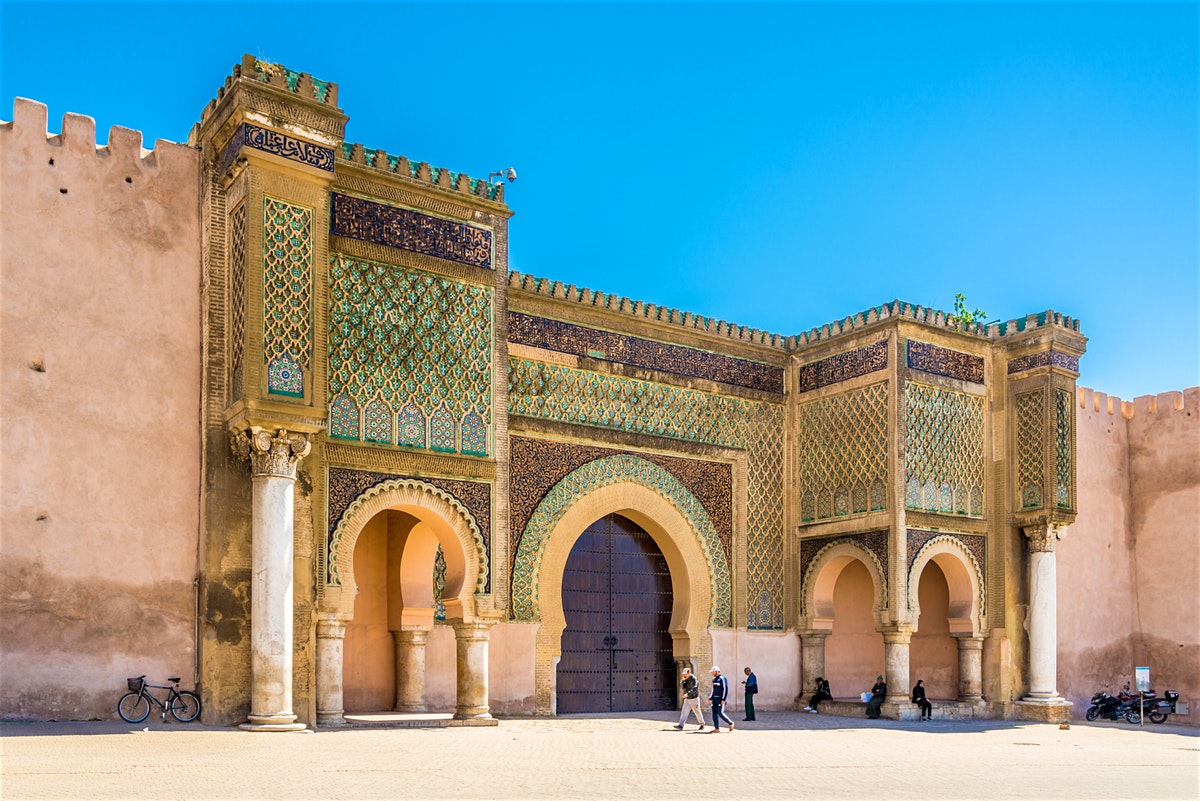
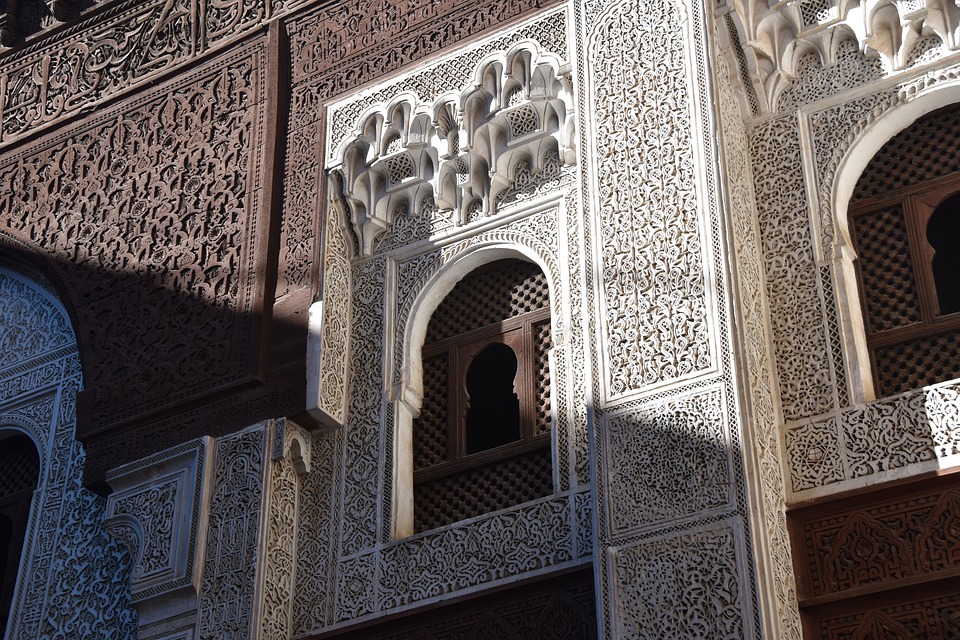
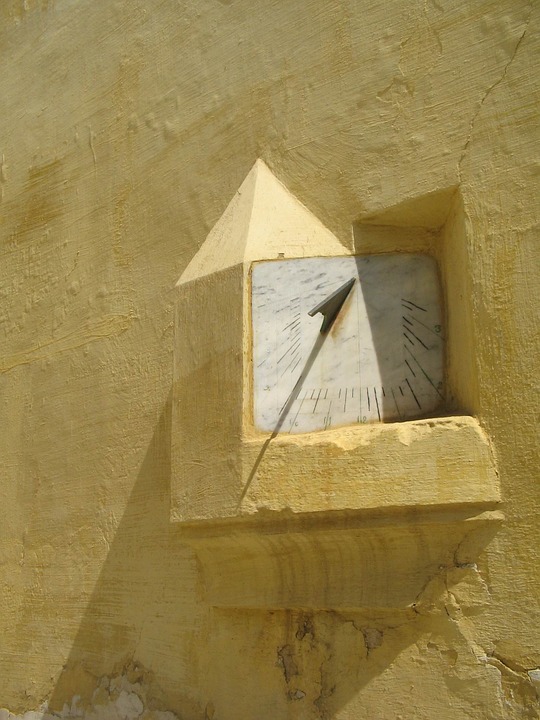
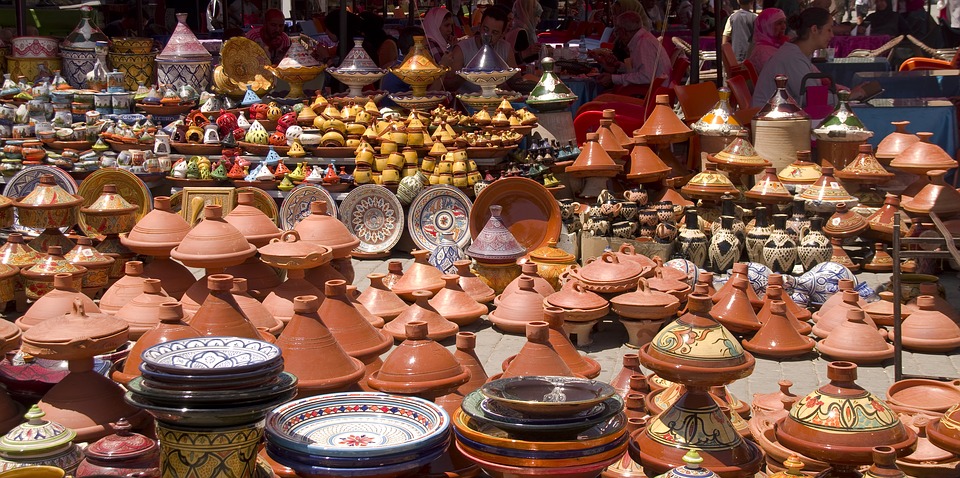
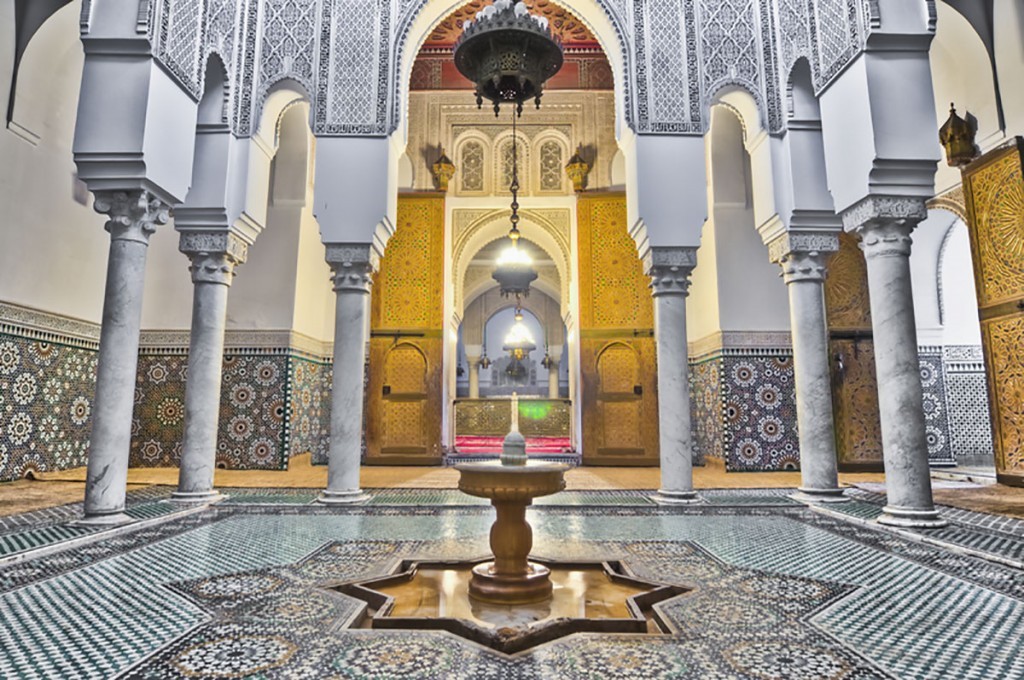
Meknes is a city in northern Morocco and the third largest city of the kingdom; founded in the 11th century by the Almoravids as a military settlement Meknes became a capital under Sultan Moulay Ismail (1672–1727), the founder of the Alaouite dynasty before the capital was relocated to Marrakech. Often referred to as the Versailles of Morocco, Meknes is ideally located between the fertile plain of the Gharb and the Middle Atlas. The historical importance of Meknes is reflected in its grand Moorish buildings and in its close relationship with Volubilis, a nearby city known as the most important archeological site in Morocco. Meknes rose to imperial status when Moulay Ismail began a building program to bring prestige to Meknes. Today, Meknes has a dynamic economic center that thrives on olives, wine and mint tea. The city is charming and offers undeniable beauty of its gates, ramparts, mosques and palaces. The harmonious blending of the Islamic and European styles of the 17th century Maghreb is still evident today. Due to the cultural and historic richness of this medieval city, UNESCO declared Meknes a World Heritage site in 1996 (one of eight within Morocco). With its myriad opportunities for exploration, Meknes is a must see site indeed.
Sightseeing in Meknes has a charm all of its own, check out the following point s of interest:
Bab Mansour: The focus of Pl el-Hedim is the huge gate of Bab Mansour, easily the most beautiful and the grandest of all imperial Moroccan gateways and perhaps in all of the Maghreb; the gate is well preserved with lavish faded) traditional tiles and inscriptions across the top. It was completed by Moulay Ismail’s son, Moulay Abdallah, in 1732. You can’t walk through the gate itself (although it’s sometimes open to host exhibitions), but instead have to make do with a side gate to the left.
Mausoleum of Moulay Ismail: This spectacularly decorated mausoleum is home to the tomb of Sultan Moulay Ismail, who made Meknes his imperial capital in the 17th century. The interiors here are truly breathtaking and showcase the glorious exuberance of Moroccan religious decoration. The actual mosque is not open to non-Muslims, but you can enter the outer parts of the complex and get a great view of the mosque's interior from the entranceway.
Hri Swani: Nearly 2km southeast of the mausoleum, Moulay Ismail’s immense granaries and stables, Hri Swani was ingeniously designed with tiny windows, massive walls and a system of underground water channels which kept temperatures cool and air circulating; the building provided stabling and food for an incredible 12,000 horses, and Moulay Ismail regarded it as one of his finest architectural projects.
Dar Jamai Museum: Overlooking Place el-Hedim is Dar Jamaï, a palace built in 1882 by the powerful Jamaï family, two of whom were viziers to Sultan Moulay al-Hassan I; Since 1920 the palace has housed the Administration des Beaux Arts and one of Morocco’s best museums. Exhibits include traditional ceramics, jewellery, rugs and some fantastic textiles and embroidery. Look out for the brocaded saddles, and some exquisite examples of Meknasi needlework. The museum’s Andalucian exquisite gardens and courtyard are gorgeous and peaceful, A must visit site while in Meknes.
Meknes Medina (Old Town) : A vibrant, bustling place full of local shops and winding alleyways. For avid-shoppers this is prime hunting ground with Souk Nejarine offering plenty of textile stalls and Souk Sebbat home to plenty of traditional Moroccan craft shops as well as clothing and Morocco's famous slippers. The 12th century Grand Mosque, with its distinctive green-tiled roof, sits right in the Medina's core making navigation easy. The Medina is still encased by its crumbling walls which in some sections are still fully standing. They were built during the reign of Sultan Moulay Ismail when he made Meknes his capital
Medersa Bou Inania: A beautiful Quranic school, considered one of the best monument the Merinides have accomplished, founded in the 14th century and has been beautifully preserved with much of its rich zellige tile decoration still in place. It is a marvel of Islamic architecture. The columns and doors have wonderful decorations, including the writings of carved ornaments. The monument contains a prayer hall, space for ablution, classrooms and a large patio, visitors can climb up to the rooftop for excellent views across the entire Meknes Medina district.
Habs Qara: A huge underground prison where Moulay Ismail allegedly kept prisoners. The stairs to the right of the pavilion entrance lead down to storage chambers originally built as a prison by the Portuguese architect Cara, himself a prisoner who earned his freedom by constructing these immense subterranean slave quarters where the 60,000 slaves (of which 40,000 were reportedly Christian prisoners of war) were shackled to the walls, forced to sleep standing up and ordered to work on the sultan's laborious building projects. Ambassadors visiting Meknes to negotiate the ransoms and release of their captive countrymen were received in the pavilion above, never suspecting that the prisoners were directly below them.
The Imperial City district: Has plenty of interesting old ruins to explore, most dating from the reign of Sultan Moulay Ismail. The Koubat al Khayatine is the city's old ambassador building and today part of the building is open to the public with a small photography exhibit on Meknes. Next door to the Moulay Ismail Mausoleum is the ruined 17th century palace of Moulay Ismail known as Dar el-Kebir.

Our team is at your service to help you with your booking issues or answer any related questions.